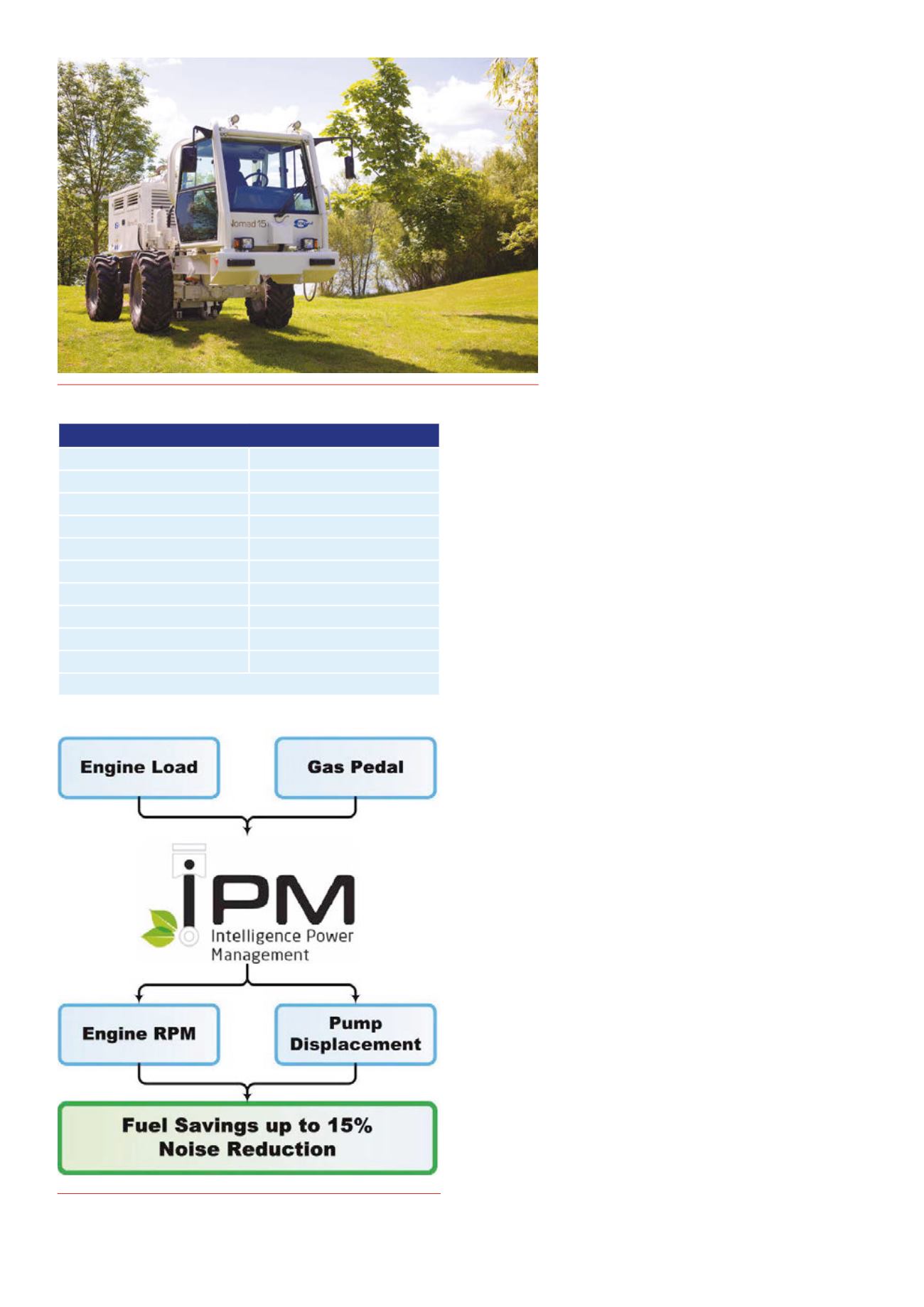
18 |
Oilfield Technology
December
2014
Manufacturers focus their efforts to reduce the
environmental impact of their equipment, and help
contractors leave nomore than footprints on the
prospected areas. This article presents two newly released
products: for land acquisition, a compact vibrator,
designed to reduce the impact of energy sources; and for
marine acquisition, a systemto detect and localisemarine
mammals around the area of operation.
Reducingthevibrator footprint
TheNomad 15 is a newcompact system, designed to
reduce the environmental impact of the vibrator, improve
accessibility and enable broadband performance. The
Nomad family nowoffers a full range of vibrators, from light
(Nomad 15 ‑ 17 000 lbf), to heavy (Nomad 65 ‑ 62 000 lbf)
and to super‑heavy (Nomad 90 ‑ 90 000 lbf).
Emissionstandardscompliance
TheNomad 15 engine complieswith Stage 3b and Tier 4i
emission standards, the EUandUS regulations that define the acceptable
limits of exhaust emissions –mainly nitrogen oxides (NOx) and particulate
matter (PM), applicable to non‑road equipment powered by diesel
operatingwithin their territories. For theNomad 15 class of engine, NOx
have been reduced by 50%and PMby 90%compared to the previous
Stage 3a/Tier3 standard. Comparedwith the Tier1/Stage1 in force until
1999, the reduction reaches 90% for NOx and 95% for PM.
Fuel consumptionreduction
In vibroseis operations, vibrator groups usually pass through
production/stand‑by cycles. The stand‑by periods are due to various
factors, such as: short weather stand‑by, line testing and repair, or
third‑party interference. Vibrator stand by is also dependent on the
topography of the survey area (flat desert requiring less stand‑by than
detour intensive small fields or uneven terrain), and on themethodology
used (single source blended acquisition yielding less stand‑by than single
fleet or flip‑flop). Sowhile someMiddle East or North Africa crewsmay
dramatically reduce stand‑by time, it remains significant inmany other
areas.
Unlike road vehicle engine operation, the engines used on vibrators
are driven at a constant speedmeasured by the rotations perminute
(rpm). Evenwhen the vibrator is on stand‑by, the engine runs at full rpm,
greatly exceeding the power requirements of the vibrator at that given
moment. Idling the engine requires driver intervention and is rarely carried
out during short stand‑by periods.
Intelligent powermanagement (IPM) is a new feature developed for
theNomad 15, andmade available for the entireNomad family (Figure 2).
IPMautomatically adjusts the engine RPM to equal the power required
for the vibrator’s currentmode of operation, without any action fromthe
driver. This is accomplished throughmeasurement of the engine load and
the signal denoting the accelerator pedal position. This new feature can
help significantly reduce fuel consumption, aswell as noise and exhaust
emissions.
A field test carried out by a seismic crewusing five vibrators, each
working formore than 2000 hours, showed fuel savings of up to 15%on
the two vibrators equippedwith IPM.
Noisemitigation
Another important aspect in vibroseis operation is noise emission. The
power required to shake the ground necessitates the use of strong engines.
The vibrators available on themarket, in their standard configuration,
do not come equippedwith noisemitigation devices. Optional
soundproof covers are available, but are rarely purchased by contractors.
Table 1. Nomad 15 specifications
Peak force output
17 364 lbf (7724 daN)
Hold down weight
16 135 lbf (7177 daN)
Frequency range
1 ‑ 400 Hz*
Length
6.57 m
Width
2.44 m
Height
3.11 m
Gradeability
55% (29˚)
Turning circle (curb to curb)
7.81 m
Turning circle (wall to wall)
9.86 m
Gross vehicle weight
9 T
*Full drive from 7 Hz.
Figure 1.
TheNomad 15.
Figure 2.
The intelligent powermanagement concept.


